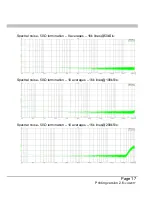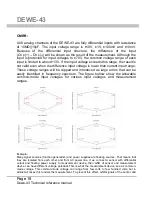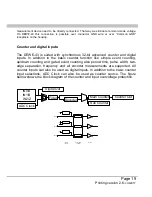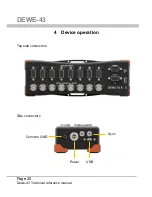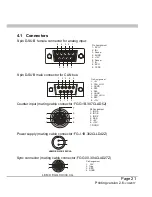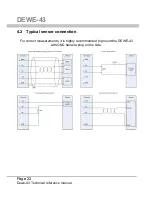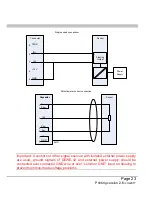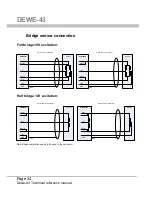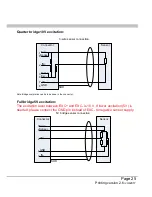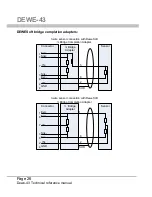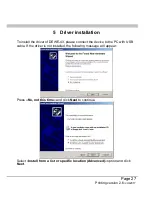
DEWE-43
Page 12
Dewe-43 Technical reference manual
ADC:
The DEWE-43 uses 8 delta-sigma A/D converters. If you sample with a data rate
of 102.4 kS/s, the ADC actually samples the input signal with 13.1072 MS/s
(multiply the data rate with 128) and produces 1-bit samples which are applied to
the digital filter. The filter expands the data to 24-bits and rejects signal parts
greater than 51.2 kHz (Nyquist frequency). It also re-samples the data to the
more conventional rate of 102.4 kS/s.
A 1-bit quantizer introduces many quantization errors to the signal. The 1-bit,
13.1072 MS/s from the ADC carry all information to produce 24-bit samples at
102.4 kS/s. The delta-sigma ADC converts from high speed to high resolution by
adding much random noise to the signal. In this way the resulting quantization
noise is restricted to frequencies above 100 kHz. This noise is not correlated with
the useful signal and is rejected by the digital filter.
ADCs can only represent signals of a limited bandwidth. The maximum frequency
you can represent is the half of the sampling rate. This maximum frequency is
also called Nyquist frequency. The bandwidth between 0 Hz and the Nyquist
frequency is called Nyquist bandwidth. Signals exceeding this frequency range
can not be converted correctly by the sampler.
For example, the sample rate is 1000 S/s, the Nyquist frequency is 500 Hz. If the
input signal is a 375 Hz sine wave, the resulting samples represent a 375 Hz sine
wave. If a 625 Hz sine wave is sampled, the resulting samples represent a 375
Hz sine wave too. This happens because signals exceeds the Nyquist frequency
(500 Hz). The represented frequency of the sine wave is the absolute value of the
difference between the input frequency and the closest integer multiple of the
sampling rate (in this case 1000 Hz).
When the sampler modulates frequencies out of the Nyquist bandwidth back to
the 0 to 500 Hz baseband it is called aliasing. Signals which are not pure sine
wave can have many components (harmonics) above the Nyquist frequency.
These harmonics are erroneously aliased back to the baseband, added to parts
of the accurately sampled signal and produces a distorted data set. To block
frequencies out of the Nyquist bandwidth, a lowpass filter is applied to the signal
before it reaches the sampler.
Each input channel has its two pole anti-alias lowpass filter with a cutoff
frequency of about 250 kHz. The very high cutoff frequency allows an extremely

















